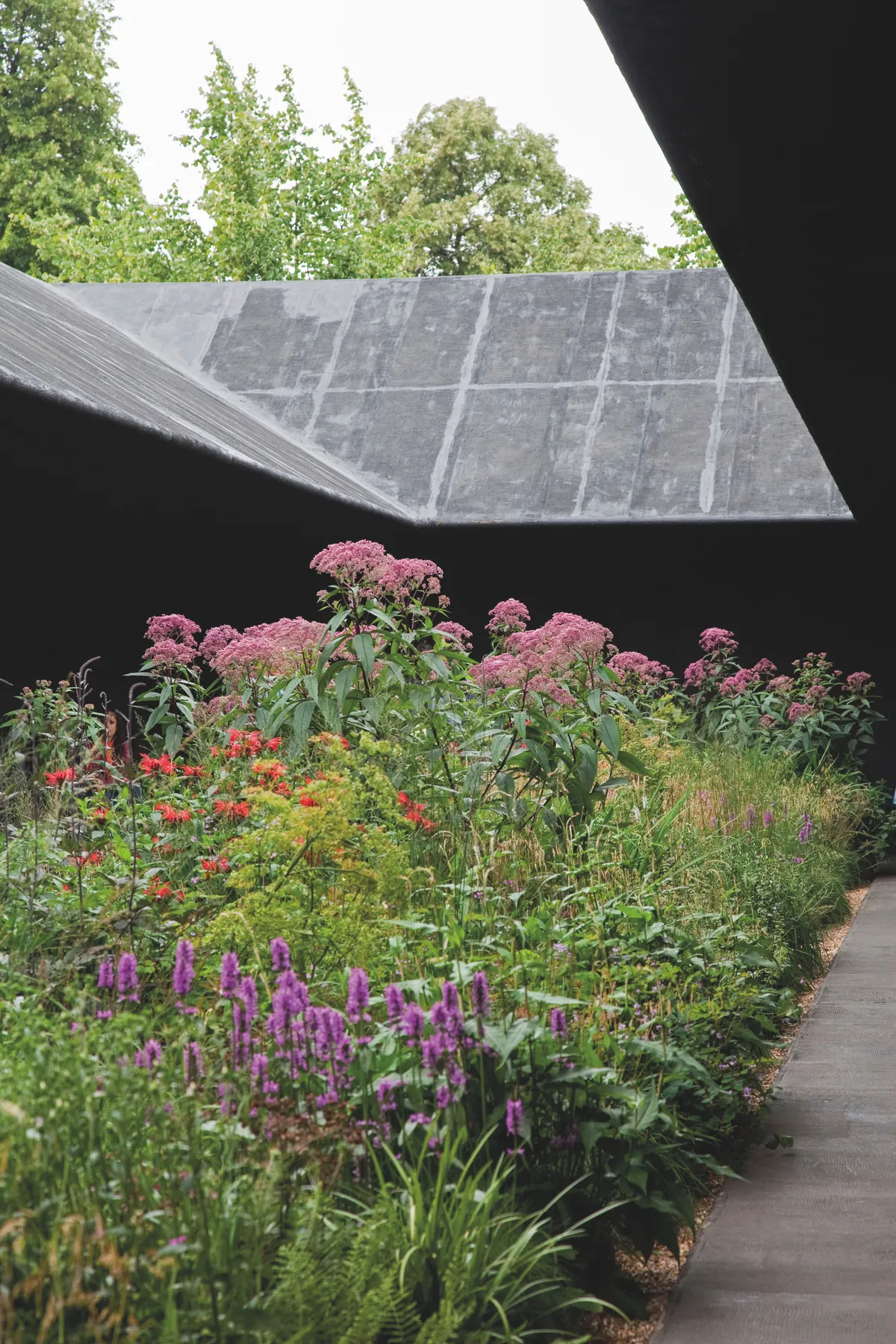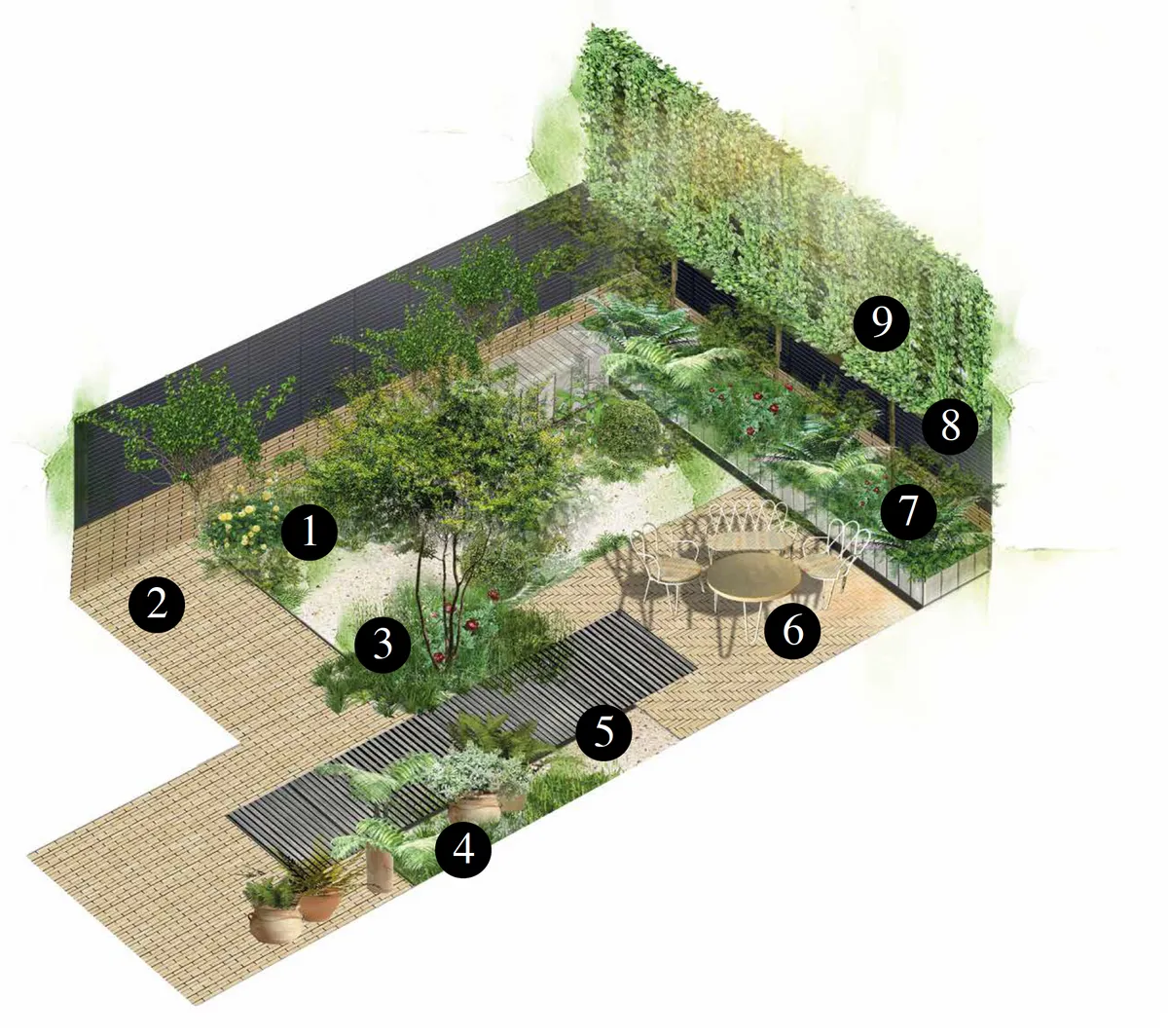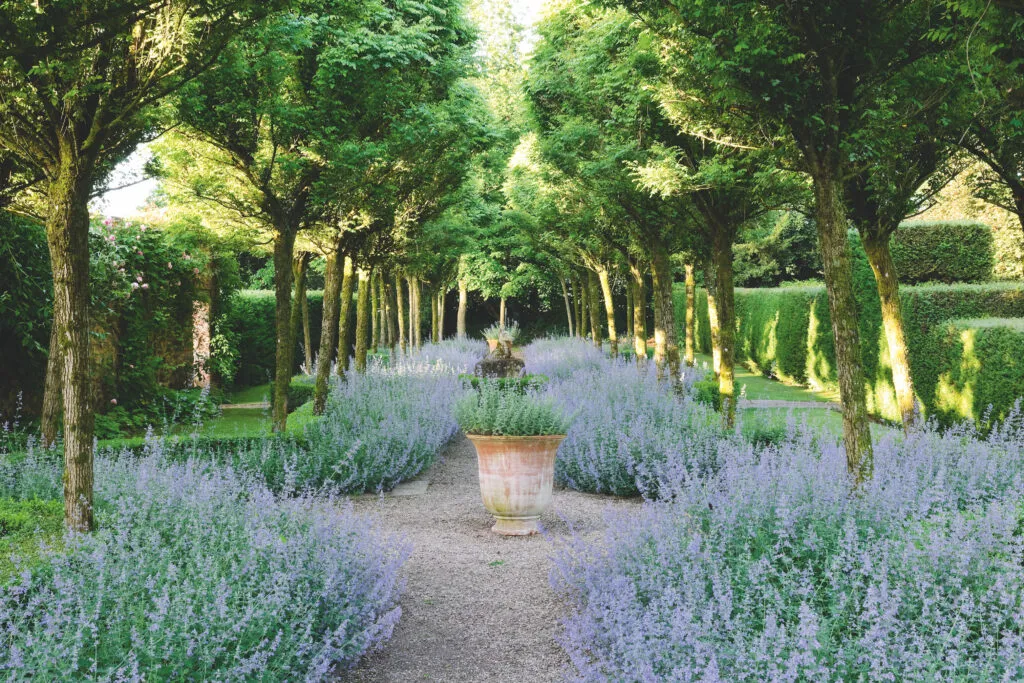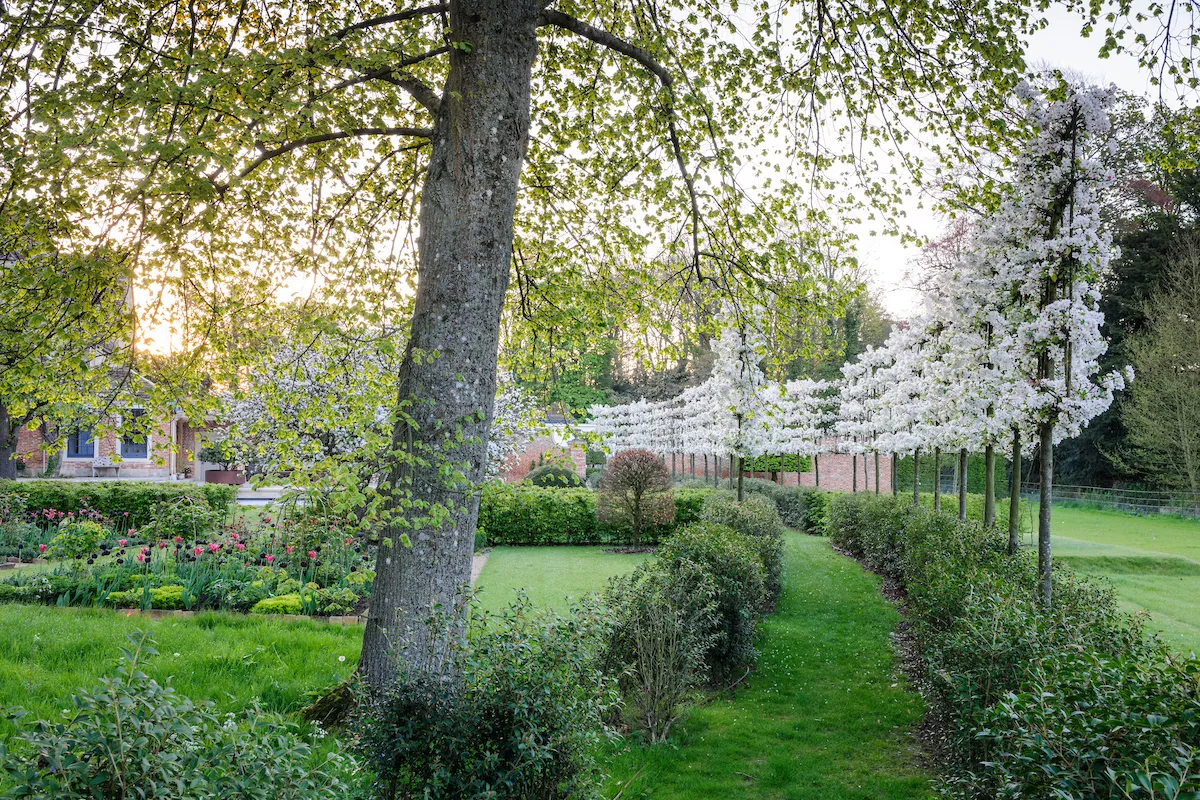Garden design is such a monumental subject that it is near impossible to give a straightforward response when asked: How do you create a successful garden? Like art, gardens can be incredibly personal, subjective and self-expressive. Every time I design a garden, I find myself travelling back to when I was a student of Fine Art, standing behind my easel and carefully observing the composition laid out in front of the class. I used to contemplate the composition for what seemed like an age before I could comfortably dip my brush into the ‘perfect’ colour because at the time I believed the perfect colour did exist.
Gardens are living and ever changing, so the balance is always evolving too.
Garden designer and landscape architect, Ula Maria
As I have become braver in my colour choices, and less afraid of grouping and layering them, I have discovered that the perfect colour does not exist, or rather it is not one colour but the combination of colours that makes a successful painting; that balance is key. Likewise in the garden, even though we might be unsure about certain individual elements, if the overall balance is right, the space feels comfortable to be in. There is great complexity and multi-layering involved in achieving success in both painting and garden design, and even though it still remains highly subjective, without a doubt balance plays the most important role in both.

What is meant by 'balance' in the garden?
We look for balance in all that we do and everything that surrounds us. We strive for a healthy work-life balance, for a well-balanced diet and for balance in our relationships. But what role does the balance play in our living environments and consequently the garden? The two most widely known types of balance are symmetrical and asymmetrical, however, these are so broad that they could only be described as overarching themes. Balance in the garden is achieved when the space is harmonious and it makes visitors feel at ease, yet has enough interest and provides them with choices. Balance is layers of voids and masses, light and shade, enclosure and exposure, colour, movement and character, as well as many other aspects.

- Use colour in moderation so it doesn't over power the garden.
- Using materials and colours inspired by the architecture and existing structures on site will make the space more unified and balanced.
- Introduce irregular shaped, multi-stemmed trees to balance clean architectural forms. Sheltered shady rest spots will create balance in large and open sunny areas.
- Develop layers of character and texture with reclaimed materials using contemporary build methods to create balance in modern gardens.
- Introduce changes in level to create multi-dimensional balance.
- Colour doesn't always have to be introduced through planting. Colour balance can be created using furniture or characterful hard landscaping materials.
- Raised planters create vertical interest and add depth to otherwise flat spaces.
- Balance rich textures and colours of planting with plain and even garden backdrops or vice versa
- Pleached trees provide structure and can be used to improve the balance between hard and soft landscaping without taking up too much room in a small garden.
Using symmetry and asymmetry
Symmetry is most commonly found and recognised in formal gardens. Visibly defined geometric forms mirror each other in a precise order, creating a sense of stability and control. It often works best in large gardens with picturesque setting, showcasing human ability to shape nature and introduce order to it by structuring its untamed kind.

Asymmetry is less obvious to the observer and, if done well, almost invisible. It is therefore more difficult to define, as it aims to look more natural and undisturbed. The trees and paths winding throughout the garden might seem random at first, but if analysed, they have been carefully placed to create asymmetrical balance. It tricks you into feeling as if the garden is part of a wider landscape and has always been that way.
To best envisage how to achieve balance with symmetry and asymmetry, try to picture the simple act of weighing them on a set of scales. To achieve balance with symmetry, you should place identical elements in equal measures on both sides. With asymmetry, the opposite is true you should imagine a variety of different items balancing out two unique sides.
Garden rooms and walls
It would be difficult to imagine a house without a number of rooms in it. Each one has a specific function, separated with walls and doors. Likewise, a garden could be viewed in the same manner.

‘Rooms’ in the garden are mostly hard landscaped areas, such as terraces and paths, but can also include any other areas that are left unoccupied to allow free movement through space, such as lawns or large water pools. They encourage exploration and provide choice so you can inhabit a space as you wish. Such voids also open up views and can be used to create vistas towards key garden elements. ‘Walls’, otherwise known as masses, are spaces permanently occupied with objects or design elements. They may consist of pleached trees, hedges, planting, sculptural features, furniture and trees or built forms. By placing elements within a garden we introduce balance between voids and masses as well as between shaded and open sky, and enclosed and exposed spaces.
Getting proportions right, maintenance and after care
The thought of sitting in the dappled shade of a large oak tree in an open park is a pleasant idea for most people. However, if we imagine that very same tree growing in a very small urban garden, our feelings would change. You can place the exact same element in a different setting and provoke feelings of empowerment or the complete opposite – feeling overwhelmed. To fully understand the balance of proportions requires careful consideration of how each one of the design elements relate not only to its setting or one another, but also human scale.
Gardens are also living and ever changing, so the balance of the garden, is always evolving too. It might be through the simple act of plants growing taller than anticipated, or self-seeding, and outgrowing spaces. These events give us opportunities to better balance the garden.
If you structure the space with pleached trees, hedges or built forms you can create balance in large, open and empty areas. You can also develop layers of character and texture with reclaimed materials using contemporary build methods to create balance in modern gardens. Sheltered, shady rest spots will create balance in large and open sunny areas. Assess whether the size of garden paths relate to the scale of their surroundings. When plant beds feel too small, enlarge them, or replant plants where beds appear too flat. Introduce planting areas of varied heights to balance out large areas of empty lawn. Balance rich textures and colours of planting with plain, even garden backdrops or vice versa. Use colour in moderation so it doesn’t overpower the garden. You don’t always have to introduce colour in a form of planting you can also use furniture or hard landscaping.
Finding balance in the garden is a continuous process rather than a static result. It never fails to amaze me how quickly dynamics of a garden change. Instead of focusing on achieving a faultless looking space, try establishing dynamic relationships between different elements of the garden that result in an overall well-balanced composition. Even the complete opposite elements of the garden can come together to form an interdependent relationship once we discover that in every element there’s a seed of another, patiently waiting to be discovered, possibly through the simple act of a removing or introducing a single item, colour or plant.
Words Ula Maria